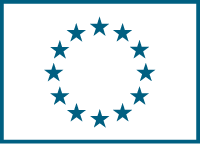Modular Electrochemical Process for the Recovery of Copper in metal form, contained in SPENT-PERCUS
(PERCUS)
Date du début: 1 mai 2002,
Date de fin: 30 mai 2004
PROJET
TERMINÉ
Background
SPENT is a solution of copper (II) in chloride acid generated in the manufacture of printed circuits that is used nowadays for obtaining copper salts. This solution has a hazardous nature that makes it difficult to be transported to chemical plants.
However, the value of this solution can be raised through electrochemical methods, converting copper chloride to metal copper and hydrochloride solution. This would lead to a more valued product (metal copper can be used for more activities than chloride copper) and a less hazardous product to be transported.
Objectives
The aim of the project was the development of a prototypal modular unit, capable of recovering the copper contained in the waste known as SPENT - a drainage solution resulting from rinsing in the manufacture of printed circuits. With the development of this technology, which was considered as being absolutely new and which could be applied for the treatment of SPENT at the place of waste generation, the following results were expected:
⢠To completely eliminate the need for waste treatment.
⢠To avoid the circulation of SPENT (dangerous waste) from the producing centres to the current treatment plants, thus complying with the Community Regulations that exist in this area.
⢠To recover the copper contained in the SPENT in the form of metal, improving the potential to exploit it in technical and economic terms.
⢠To enable exploitation of the generated hydrochloric (HCl) obtained in the new plant as a raw material at source (printed circuit producing plant).
Results
The results achieved in the prototype plant developed allow a guarantee of the technical and economic viability of the installation of the newly developed technology at each point where the waste to be treated (Spent) is generated, with no more limitation than that arising from defining the number of plant modules needed to adjust the treatment capacity of the electrochemical plant to the volume of generation and regime of operation of the producer of Spent.
Therefore, the environmental benefits of this new technology fully coincide with the objectives envisaged, as the definitive installation of this new technology is achieved.
The new technology developed allows the following environmental benefits to be obtained:
⢠Recovery of the copper content of the SPENT, in the form of metal, increasing the possibilities of its technical and economic valorization.
⢠Possibility of valorization of the hydrochloric acid obtained as a result of the copper metal recovery process in the new plant as a raw material in the manufacturing process of printed circuits.
⢠Elimination of the need for waste treatment.
⢠Elimination of transfer of SPENT (dangerous waste) from the production centres to the treatment plants, thus complying with current Community Directives in such matters (prohibition of the circulation of waste between states).
Given the modular nature of the demonstration unit developed by this project, its
potential of replication extends to all the producers of Hydrochloric SPENT, both in Europe and in other countries outside the Community.
This project has been selected as one of the 24 "Best" LIFE Environment projects in 2004-2005




